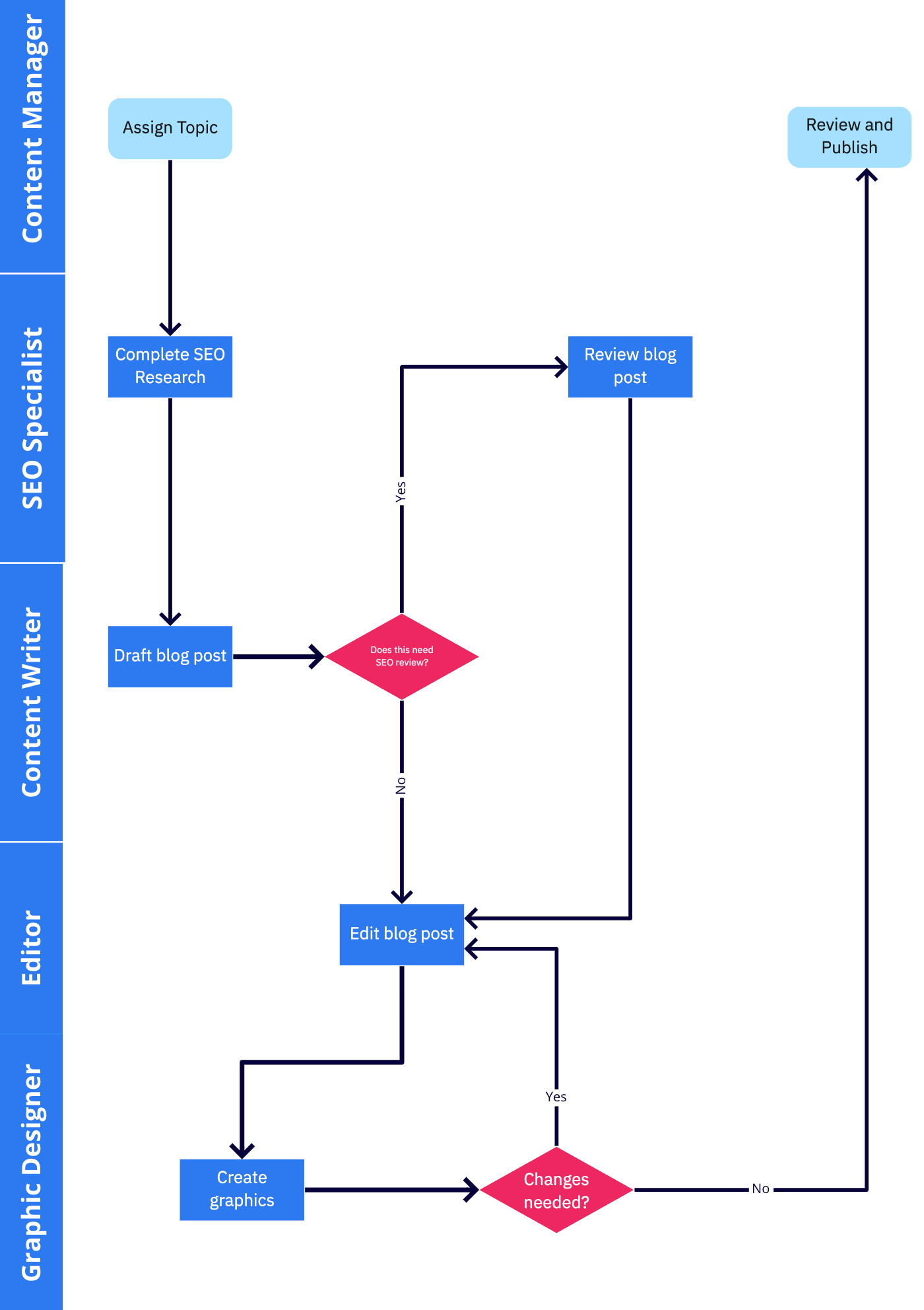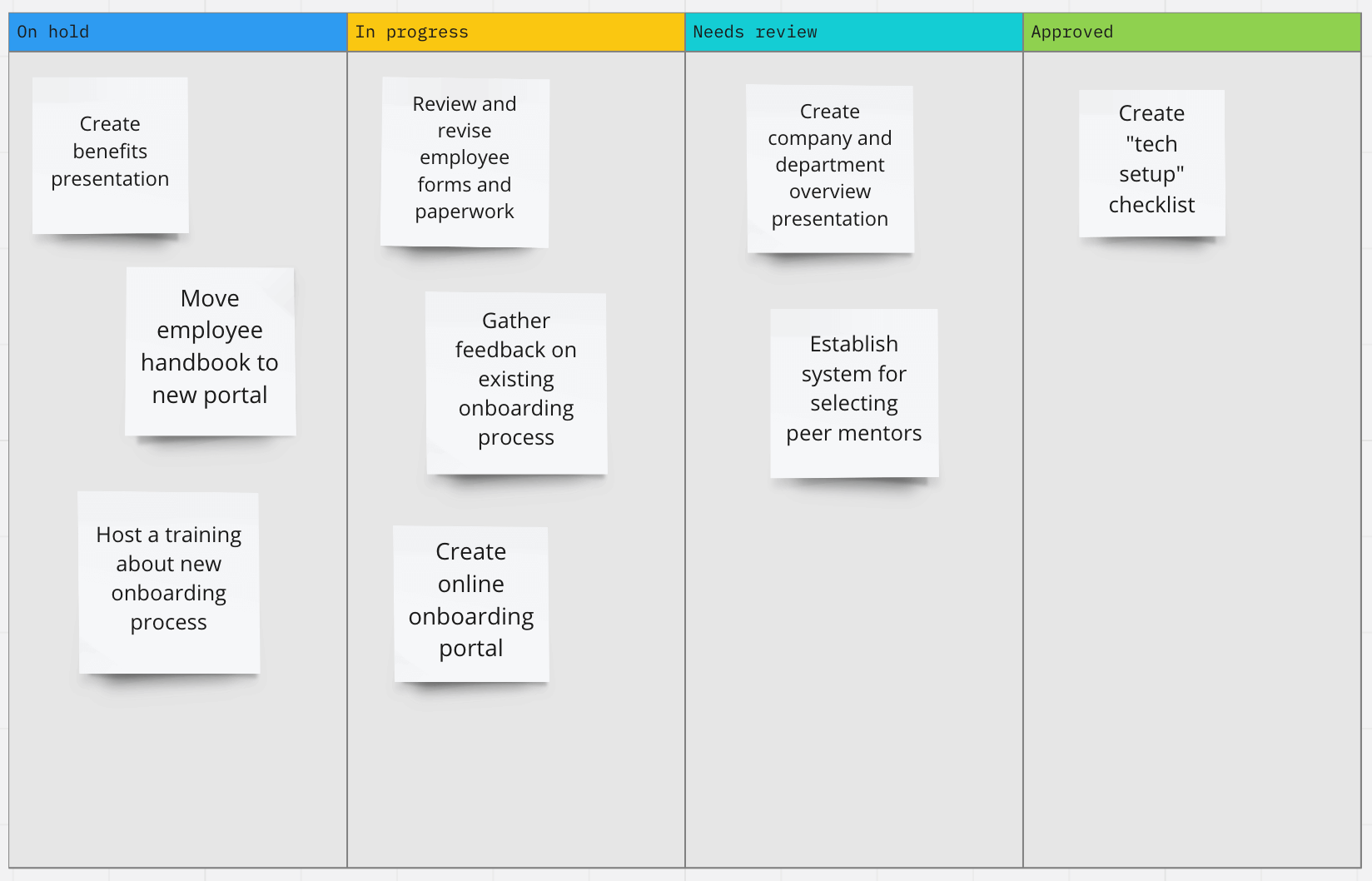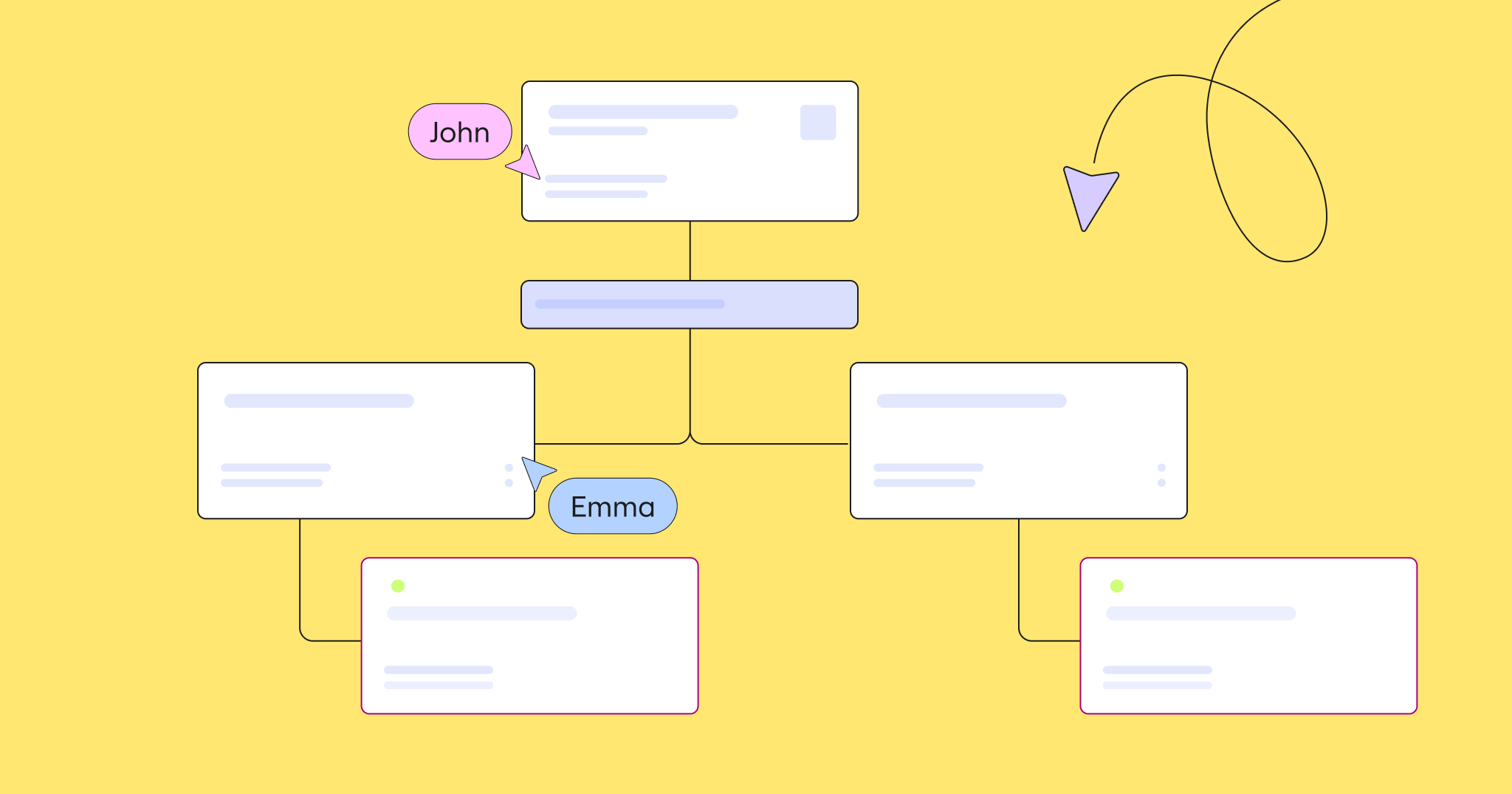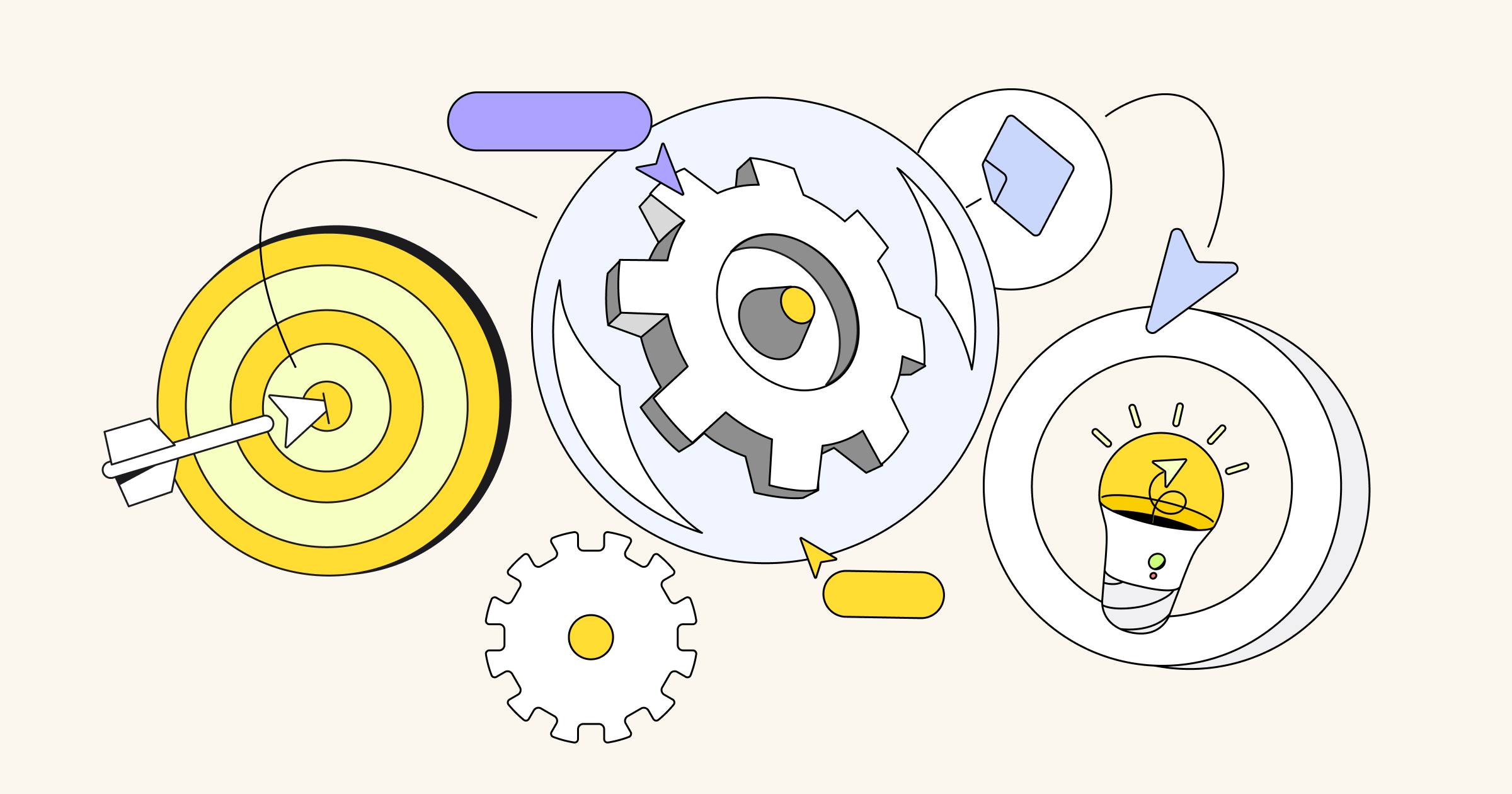You’ve probably been a part of a few projects that ran smoothly. Everybody knew what they were responsible for and what happened next. People had the resources they needed when they needed them. There weren’t any unnecessary delays or frustrating miscommunications.
But, you’ve likely also been a part of projects that ran off the rails. People hopped around between random tasks. Some pieces were accidentally duplicated while others were skipped entirely. There was a lot of finger-pointing and blame-placing for all of the chaos.
There’s no doubt that we’d prefer if all of our projects ran like the first one, but making that happen isn’t always so easy. That’s where a workflow process comes into play.
What is a workflow process?
A workflow process is an established sequence of steps used to complete a task, project, or goal.
They can be used for straightforward and repeated processes (like correctly updating customer information in your CRM, for example) as well as for larger, more involved projects and undertakings (such as revamping your company website or planning your annual retreat).
Whether your workflow process is simple or complex, the point of the workflow remains the same: to ensure consistency in the way that work gets accomplished.
Workflow vs. process: Is there a difference?
You’ll hear the term “workflow process” come up a lot. But, you’ll also hear the words used separately: “workflow” and “process.”
It can be confusing. Sometimes the words are used interchangeably, and other times they’re treated as if there’s a major differentiator between them. What’s the deal — and, more importantly, which is correct?
Both a workflow and a process have one big thing in common: they document the steps needed to get something accomplished. However, there is a slight difference between them:
- Workflow definition: The steps taken to complete a task
- Process definition: The steps taken to achieve a goal
Admittedly, those waters can still get a little murky. After all, what if completing a task or project is a goal? That’s why you’ll hear the term “workflow process” used, as it captures all potential use cases of this planning and documentation exercise.
How can you understand a typical workflow?
Chances are, you and your team already have a number of existing workflow processes for a number of tasks and objectives, whether it’s requesting time off, booking a meeting room, or kicking off a new project.
While those steps are all running behind the scenes, it’s important that you document these workflows — something known as workflow mapping or workflow process mapping.
Workflow mapping involves drawing out your typical process (meaning, the sequence of steps, who’s responsible for what, what decisions need to be made that could impact the order, etc.) in a chart or diagram that you and the whole team can reference.
Think it sounds complicated? It doesn’t need to be. Start with our workflow template or even a flowchart template to begin easily mapping out your own workflow process.
What are the benefits of workflow mapping?
Perhaps some of those processes are already running without a hiccup on your team. Why would you spend the time documenting and mapping them?
Well, workflow mapping — even for established and smooth processes — offers a number of advantages, including:
- Better collaboration: You might think that everybody knows what happens when, but even long-standing processes can run off track. Diagramming and mapping those workflows gives everybody a single source of truth for how a process should work, so there aren’t any crossed wires about who’s doing what or what happens next.
- Increased consistency: Related to that, workflow mapping can lead to more consistency and cohesion in your tasks and projects. Repetitive tasks are taken care of reliably time and time again (even if somebody leaves the team or is on vacation), because everybody has that documentation to follow.
- Easier onboarding: Bringing somebody new onto the team can feel overwhelming, and there’s a lot to get them up to speed with. Rather than having to hand-hold them through every step and process, workflow mapping gives them a documented resource that they can lean on to handle their responsibilities independently.
- Refined processes: Nearly every process or workflow has room for improvement, but those sticking points aren’t always easy to spot when you’re caught up in the hustle and bustle of actually doing the work. Mapping out the workflow gives you time to think through the sequence, identify any bottlenecks or repeated issues, and then take steps to fix them.
Though it can be a complicated undertaking to do right, workflow process mapping isn’t an unnecessary formality or a waste of time and energy. When done correctly, it can be a powerful tool for helping your team work more effectively and efficiently.
Workflow process examples
Need some creative inspiration to get started with your own workflow process map? Here are a couple of examples to get your wheels turning.
Workflow process example #1: Publishing a blog post
Use the swimlane diagram template
You have the flexibility to choose the diagram type that works best for your team and your specific workflow. This example uses a swimlane diagram to show the steps and stakeholders involved in producing and publishing a company blog post.

Workflow process example #2: Creating a new onboarding process
You and your HR team are creating a new onboarding process for new employees. You use the Miro workflow template to create all of your tasks and then organize them into columns for “on hold,” “in progress,” “needs review,” and “approved.”
Begin any process with Miro’s Workflow Template

Understand how your team gets work done (and how you can do it better)
A workflow process documents the steps you and your team take to accomplish something.
While you might think that those steps are second nature, a workflow process map can be an undeniably helpful tool to not only understand your processes, but also improve them.



